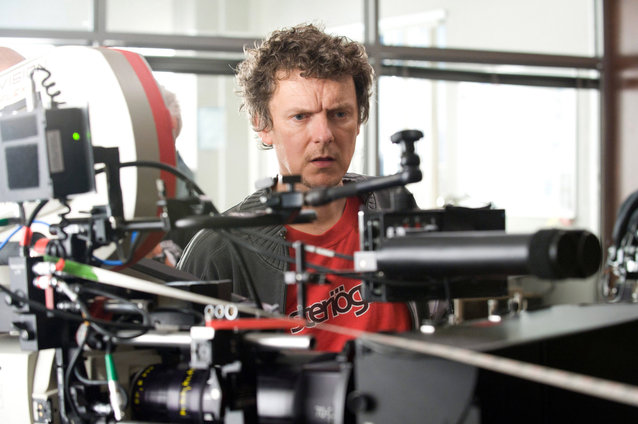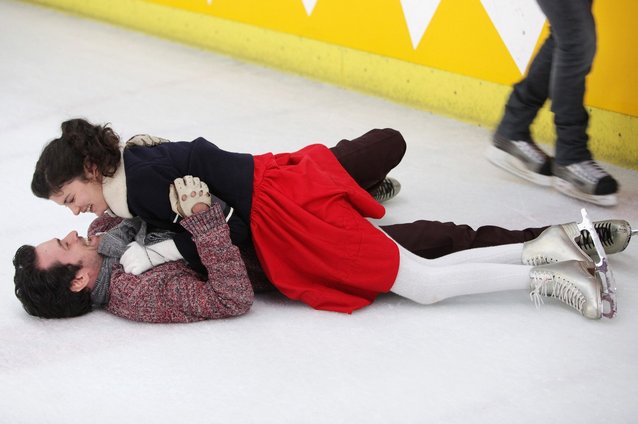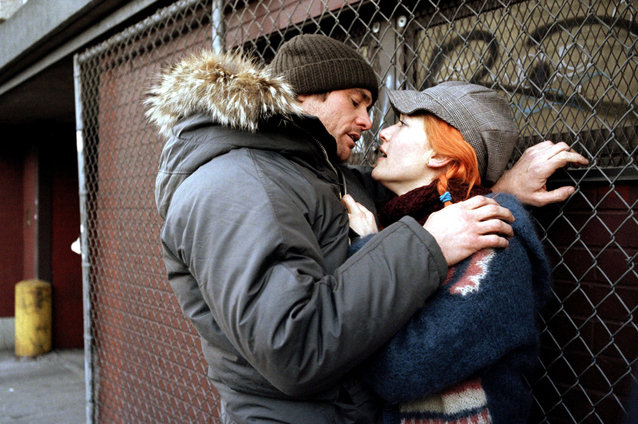
We first encountered the bounties of Michel Gondry’s imagination in Eternal Sunshine of the Spotless Mind, his second collaboration with Charlie Kaufman (after Human Nature) that earned both parties new legions of admirers. Gondry’s latest film, Mood Indigo, is perhaps his most visually imaginative, bringing objects and ideas to life in a sweet, simple, sad love story about a French dreamer and his sick wife. In a conversation about the new movie, Gondry taps into the tenets of his mind, discusses bringing his visions to life, and even reconsiders the impeccable message that made Eternal Sunshine such a winning film a decade back.
When developing the more surreal elements of the film, is there a certain direction you go in visually? Were there margins you set for your aesthetic style, or do you just let your imagination run wild?
Michel Gondry: There is stuff that comes back, it’s funny that you mention the insects. I did something very close to that with the shaver in The Science of Sleep. And I was probably more or less consciously influenced by Boris Vian from a young age. It’s … just making you believe that objects can be alive, that there is not a strong difference between things [and people]. In the imaginary world, the table has four legs; I could put shoes on the legs of this table, and it is something different. So it’s how I imagine things. It’s sort of functional, it’s not really an artistic way of looking at things. So it might be messy at the end, but it doesn’t come from trying to be a type of image.
Is that just sort of how you live your day-to-day life, being an imaginative person and writer, just noticing things like that?
MG: Yeah. Things remind me of something else… or sometimes, even when you see something far in the distance, you don’t really understand what it is. So your brain tries to find an explanation. It can be the shape of a cow, or a shop window, or anything. But your brain tries to tell you what it is. In a way, my imagination takes from that. It’s like when you try to remember a dream, but it’s all messy. Sometimes you try to make sense, to make a story out of it, but it’s really hard. Your feeling tells you [that] you’ve been through a very complex and traumatic story, but then if you look at the detail, the rest of it makes no sense. I try to put that in order so it becomes something more explainable. So I do that with everything I touch.
Mood Indigo has a particularly unusual structure — the conflict comes to life very late in the film. And you can say the same for some of your other movies. Can you talk about how diverting from the norm helps you tell the stories you want to tell?
MG: I don’t know, exactly, the format… so that’s by ignorance, I guess. Some people say that there are only seven types of stories you can tell. That’s quite depressing! … In the movies, they don’t tell you exactly what kind of story it is. You decide it yourself. It’s just a story when it finishes. It’s my technique. so I don’t have the preconceived idea. Some people, maybe, say that I don’t know how to tell a story. Maybe we just on what the story is.

We got to spend a lot of time in the “happy chapter” in Mood Indigo, before the sadness sets in. Did you particularly want to immerse your viewers in this dreamlike state before we hit the hard stuff?
MG: In the French version, we had much more time on the dark side. Incidentally, when we tried to distribute in … some other countries in which Sarte’s part is a little lighter. In the first version it was much heavier. And some people felt, myself included, that it was a bit long. So I felt what I wanted, for sure – I didn’t think of balance – I wanted to start as ripe, full, inventive. A little bit shallow at the beginning to show the contrast with the really, really somber, emotional [ending]. So I didn’t see it in terms of balance, but in terms of cooperation.
Speaking of the mood, I wanted to hear you talk about the very interesting use of color in this movie.
MG: That was the first visual impression I had when I read the book. I discovered the book a long time ago, way before I ever thought I would become a film director. And it stuck with me. I though, if ever I was asked to do this adaptation I would do it this way: start in color, finish in black and white.
I feel like it’s very gradual.
MG: Yeah, it starts in the middle, when Colin is looking for a job. At this point, we lose 10 percent of the color, and then the next part is 20 percent, 30 percent, 50 percent, and so on, until it’s completely black and white … We wanted to [shoot the film] in winter, and we shot in black and white. Even though it was digital, we set the camera so it was black and white. So we could not come back and change our minds. I didn’t want to give any possibility to anyone to influence me to change that.
And did you think that they would be able to?
MG: I had one bad experience on a video, where I was supposed to do it in black and white. We shot it in color for blue screen purposes, and then the producer convinced me to keep it in color. To this day I regret it. Stick to your plan!
You mentioned earlier that you had ideas for this book when you read it many years ago. Which ideas were in your head back when you first read the book, and which ones came to you as you were making the movie?
MG: I had a list of numerations in the book which I sometimes wrote down, and I wanted to present the film a little bit like a personal flashback of my first impression reading the book. I remember the ice-skating rink, the stretching guy, all the chaos … I had many impressions that stuck with me from the beginning.
Was there anything that came about during filmmaking that wasn’t among your original impressions?
MG: The characters were very transparent in the book. We needed these actors, like Romain Duris, who are emotional. In the book they are very transparent. We needed to correspond to how young people are hanging out in Paris. I couldn’t think of a French young actor who I would love to work with. So that’s why I picked these [actors].

Like you said, the characters in this story are transparent, and in the movie can get a little wacky. Can you talk about finding the humanity and gravity in characters, and in a world, like this?
MG: A lot of [the writing process] gets in the way of directing the actor or finding right tone or finding the emotional thread. So I managed somehow, more or less, to forget all the technique. To really stick with the actors. That’s one of the most important things to do.
Was there anything specific that these actors brought to the film?
MG: Yeah. Romain did. Audrey [Tautou] had this idea that she would be – she would say “very, very, very, very!” … that sort of style. Just a detail like that. Aïssa Maïga, who played Alise, she had this idea that she had a secret in her mind: a love affair with Colin. And people add their own agenda, and their little secret carried that way enriched the character.
Sure. Like Omar Sy’s character and the money. There’s a lot of interesting side stories going on.
MG: Yeah, the money was a big issue, and it was even bigger in the book. The fact that it keeps shrinking, he had to count his money, and everything. So I sort of thought I’d diminish that in the adaptation. I thought it was a bit reductive.
You just felt like it was a little unnecessary?
MG: Yeah. Reading the book, it can really digress … [in the film it felt] a little more trivial. In fact, maybe now the money issue was it was trivial to push it so far. It was too trivial to be pushed that far.
I wanted to talk to you about the ending. The ending of the movie reminded me of the ending of your other film, Eternal Sunshine. Even if something ends sadly, it’s better to experience it. Since it can be seen as the theme to two of your movies, can you talk about what this message means to you?
MG: The idea is that if you just erase everything, then it’s like lazy eyes, it’s less intense. Every person might say there’s one specific memory that ruined all your life, maybe you should erase it. I mean, in movies it’s different. You can really enjoy a movie that’s really sad. Because it resonates with a part of your life that’s not necessarily happy. But we cry in movies… it’s one of their purposes.
You can catch Mood Indigo in theaters now!


